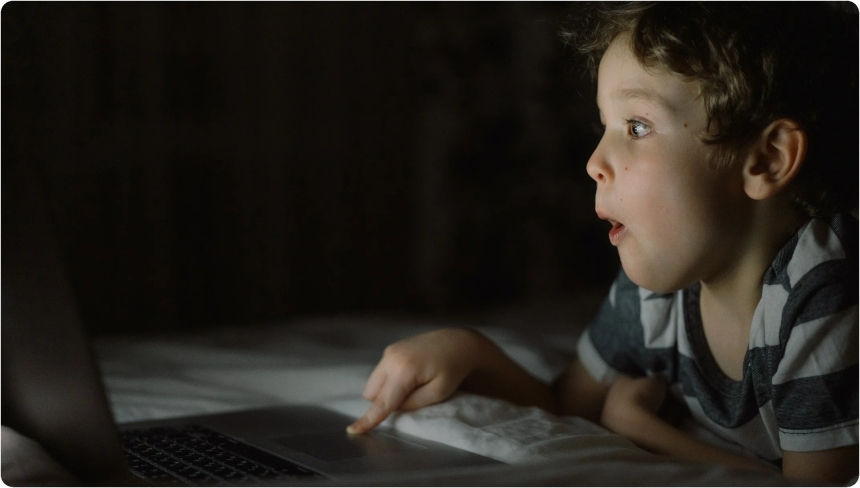
Screens have become part of nearly every moment in our daily lives. We use them to study, connect with friends, play games, and explore new ideas. For kids and teens today, being online feels completely natural — it’s how you learn, communicate, and express yourself. But as helpful and entertaining as technology can be, spending too much time in front of screens can affect your physical health, your emotions, and even your relationships. The challenge is learning how to keep things balanced.
Scrolling through social media, watching videos, or playing online games can be fun and relaxing. But it’s easy to lose track of time. Minutes turn into hours, and suddenly, the day feels shorter and your to-do list longer. When screen time starts to replace sleep, exercise, or meaningful in-person connections, it becomes more than just a habit; it becomes a problem.
Research shows that excessive screen time can lead to eye strain, headaches, and trouble sleeping. It can also affect mood and focus. The more time we spend in front of screens, the less time we spend doing things that recharge our minds, like spending time outdoors, talking face-to-face, or simply resting.
Even though screens are designed to keep us engaged, we have to remind ourselves that not every online moment is productive. It’s important to know when to log off, even if it’s hard to do.

Not all screen time is bad. In fact, some of it can be incredibly useful. Online learning, tutorials, and creative apps help kids explore new skills and express ideas in ways that weren’t possible before. Video calls keep families connected, and social media can be a platform for creativity and advocacy.
The real question is how we use our devices. Productive screen time helps us learn and grow, while passive screen time, like endless scrolling or binge-watching, often leaves us tired or unmotivated. It’s not about cutting technology out of your life, but making sure it adds something valuable instead of taking something away.
Try these:
Finding balance doesn’t mean completely giving up your phone or favorite apps. It means being aware of how much time you spend online and what kind of content you engage with. When you take control of your screen time, you gain more time for things that really matter: friends, hobbies, rest, and self-care.
Remember, not all moments worth living are on a screen. Real-life experiences — laughing with friends, sharing a meal with family, seeing a sunset — can’t be captured or replayed the same way. Technology should enhance your life, not replace it.
The digital world isn’t going away anytime soon. It’s a part of who we are and how we live. That’s why it’s so important to learn how to use it in ways that keep us healthy, grounded, and connected to what truly matters.
When you treat your screen time like any other habit, something you can shape, adjust, and improve, you’ll find that balance is possible. You don’t need to go completely offline to take care of yourself. You just need to be mindful, intentional, and willing to unplug when your mind and body tell you it’s time.
The more we understand how technology affects us, the easier it becomes to use it wisely. Balance isn’t about restriction. It’s about control, awareness, and making space for both the digital and real worlds to exist side by side without letting one take over the other.
Educational Value: There's a vast ocean of educational apps and programs for young minds. From learning the alphabet and numbers to exploring new languages and science concepts, screen time can be a window to a world of knowledge.
Creativity and Play: Digital platforms offer unique opportunities for creativity—be it through interactive storybooks, music-making apps, or digital drawing tools. These experiences can supplement traditional play and creativity.
Family Bonding: Believe it or not, screen time can serve as a bonding activity. Co-viewing educational content or enjoying family movie nights can create shared experiences and open conversations.
Impact on Physical Health: Excessive screen time has been linked to sedentary behaviors, affecting physical health and leading to obesity. It's also associated with disrupted sleep patterns, mainly if screen use occurs near bedtime.
Social Skills Development: Young children learn a lot through face-to-face interactions. Overreliance on screens can limit these opportunities, potentially affecting the development of social skills and empathy.
Attention and Learning: There's growing concern about screens affecting children's attention spans and the ability to focus on non-digital tasks, which can influence learning experiences outside the digital world.
Good Times for Screen Time:
Bad Times for Screen Time:
Finding balance in our digital age with your child doesn't have to feel like a tech tug-of-war. By understanding the benefits and drawbacks, setting thoughtful boundaries, and encouraging various activities, you can ensure that screen time is a positive addition to your child's daily routine. Remember, balance is critical, and you're the best model for how to strike it. Be considerate that although it's nice to have parent breaks, they shouldn't be at the expense of breaking your screen time rules with the little ones.
 Like
2
Like
2
 Dislike
0
Dislike
0
 Love
2
Love
2
 Funny
0
Funny
0
 Angry
0
Angry
0
 Sad
0
Sad
0
 Wow
0
Wow
0